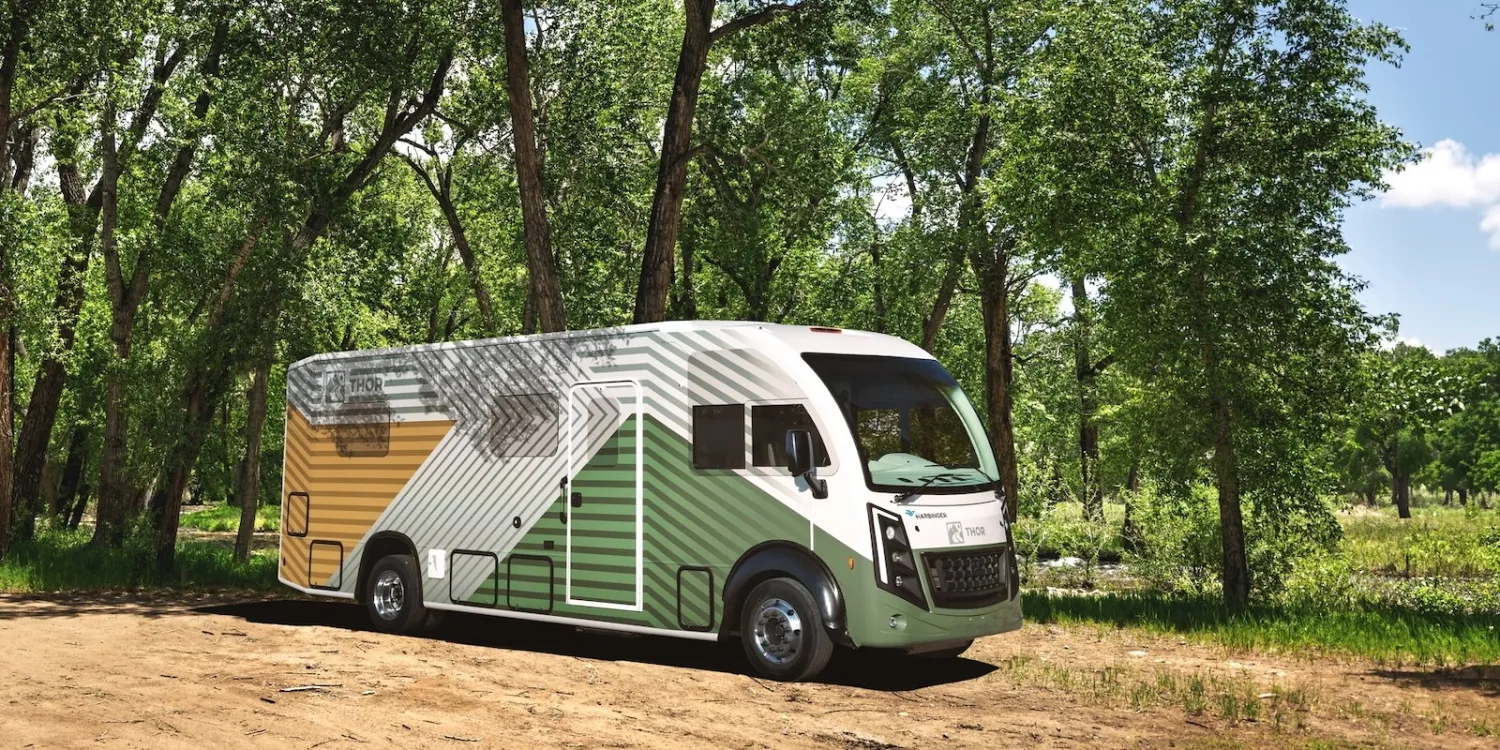The latest electric RV concept from Thor is a Class A motorhome with big batteries, electric drive, and a range-extending generator. Will this PHERV (?) make it to production?
Visually similar to Thor’s existing Vegas Class A motorhome and co-developed by Thor and commercial EV manufacturer Harbinger, this “world’s first hybrid RV” combines a gas-powered range extender that can generate electric power to feed the RV’s huge, 140 kWh battery packs. The batteries then send power to Harbinger’s eAxle (a proprietary electric axle that combines a motor, inverter, and gearbox into a single unit) at the back of the RV’s ladder-style frame. Along with the range-extender, the batteries should be good to deliver, “an estimated 500 miles of range.”
And, yes – it’s a totally disingenuous claim, in the same way, and for the same reasons, that similar claims from companies like Toyota and Ram that talk about “unlimited range.” To Thor’s credit, though, it’s embracing the “hybrid” label.
Harbinger hybrid RV chassis
“Electrification will play a central role in the future of mobility, including RVing,” said THOR Industries President and CEO Bob Martin. “This first-of-its-kind hybrid platform and our ongoing collaboration with Harbinger are reinforcing THOR’s leadership in this segment and creating major points of product differentiation for our family of companies.”
They need to. As our own Peter Johnson wrote, “If you haven’t noticed already, more electric vehicles are going ‘off-grid’ to explore the outdoors, go camping, etc.” and those electrified options – even the ones that “just” electrify their generators – are upgrading the campground experience significantly by eliminating the sounds and smells of diesel and gas.
Thor hasn’t revealed pricing or interior features, but Harbinger made headlines recently by announcing that its commercial EVs would reach price parity with diesel options by the end of this year. If that’s true, the first production hybrid electric RV from Thor could come to market with a price tag that’s close to (if not the same) as its conventional ICE models – and that seems like big news to me.

